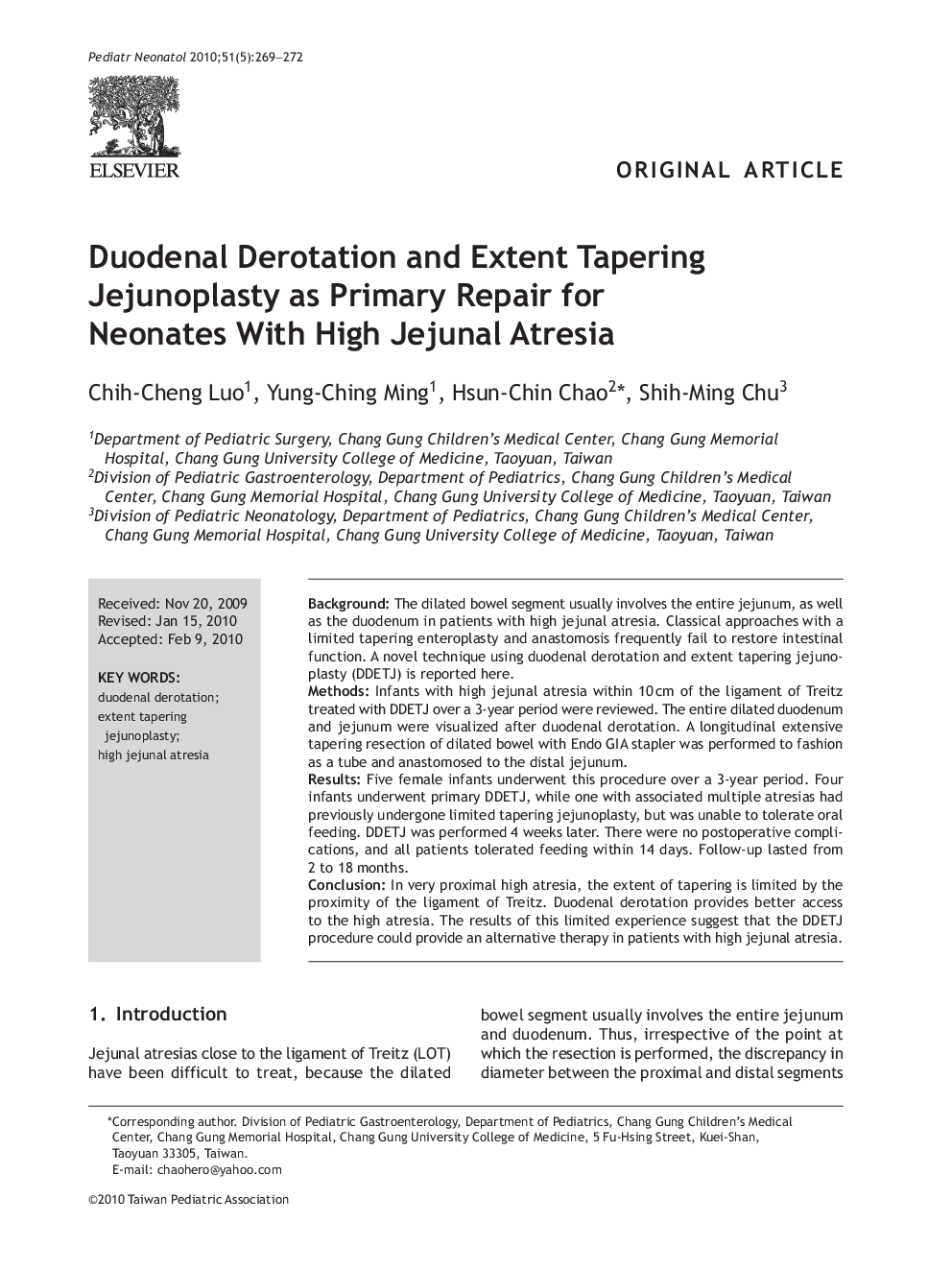| Article ID | Journal | Published Year | Pages | File Type |
|---|---|---|---|---|
| 4175396 | Pediatrics & Neonatology | 2010 | 4 Pages |
BackgroundThe dilated bowel segment usually involves the entire jejunum, as well as the duodenum in patients with high jejunal atresia. Classical approaches with a limited tapering enteroplasty and anastomosis frequently fail to restore intestinal function. A novel technique using duodenal derotation and extent tapering jejunoplasty (DDETJ) is reported here.MethodsInfants with high jejunal atresia within 10 cm of the ligament of Treitz treated with DDETJ over a 3-year period were reviewed. The entire dilated duodenum and jejunum were visualized after duodenal derotation. A longitudinal extensive tapering resection of dilated bowel with Endo GIA stapler was performed to fashion as a tube and anastomosed to the distal jejunum.ResultsFive female infants underwent this procedure over a 3-year period. Four infants underwent primary DDETJ, while one with associated multiple atresias had previously undergone limited tapering jejunoplasty, but was unable to tolerate oral feeding. DDETJ was performed 4 weeks later. There were no postoperative complications, and all patients tolerated feeding within 14 days. Follow-up lasted from 2 to 18 months.ConclusionIn very proximal high atresia, the extent of tapering is limited by the proximity of the ligament of Treitz. Duodenal derotation provides better access to the high atresia. The results of this limited experience suggest that the DDETJ procedure could provide an alternative therapy in patients with high jejunal atresia.
